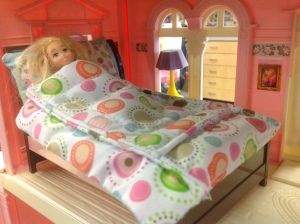We have worked hard at reminding your children to wash their hands after blowing their nose, using the bathroom and before eating, but Kindergarten children are five years old and cannot possibly remember every instruction every time. We appreciate your support in reminding your child about these good habits when at home and school.
With our return to school, and the advent of flu season upon us, we thought it would be a good time to talk about when your Kindergarten child is sick.
Every year we are informed by parents at drop-off time that their child has “a little cough,” “a little fever” or “a bit of a runny nose” but is still well enough to come to school.
When a child is sick, as parents we have a responsibility to not only to care for our child but we also have a responsibility to the classroom and school communities.
A sick child should stay at home, for the mutual benefit of the child, the classroom students and teaching staff. It is good parenting to decide that your child should rest and recover quietly in bed. A child who is given one, two or even three days, to stay at home will get better faster, and be stronger and more able to fight the next cold or illness in the classroom.
We realize as working parents ourselves that it is not always convenient to have your sick child stay at home, as it means taking a day off, or more, from work. However, there are many implications of having a sick child at school.
A sick Kindergarten child often feels fragile, prone to tears and wanting his or her parents. Sending your children to school sick and feeling poorly sets them up for failure, not success.
When the children are sick, they do not have the energy to focus on the lessons of the day. It is very difficult for them to self-regulate their emotions in the classroom context. They lack the patience, because they do not feel well, to cope with challenging schoolwork, possible conflicts with their friends and making good choices.
Sometimes a sick child may still wish to come to school. But in the classroom we are very close to each other in proximity. The children are playing at Centre Time quite close together. They sit close together while eating at the tables. They still hold each others’ hands. Because our supplies are shared, including crayons, scissors, gluesticks and pencils, a sick child at school increases the risk of spreading infection to the rest of the children in the class.
Your child will enjoy their school experiences much more when they return to school rested and healthy!



Pingback: Inside Stories |
Pingback: The Self-Regulated Teacher’s Top 5 Posts for Term Two | The Self-Regulated Teacher
Pingback: Kindergarten Curriculum Night | The Self-Regulated Teacher
Pingback: Meet the Kindergarten | The Self-Regulated Teacher
Pingback: Student Absenteeism | The Self-Regulated Teacher
Pingback: Your Kindergarten Child’s Good Health: 2017 Update | The Self-Regulated Teacher
Pingback: Your Kindergarten Child’s Good Health: December 2018 Update | The Self-Regulated Teacher